Dual Immersion Programs: 5 Ways to Help at Home
Dual immersion programs are a great option to get more language learning in the early grades, but how can caregivers and teachers work together, especially if Spanish (or other target language) isn’t spoken at home? Read on for our tips.
The (well-founded) pressure to raise bilingual kids
In this modern world with all of its challenges and opportunities, parents have a lot of options to think through and a mountain of decisions to make.
As parents contemplate preschool, homeschool, religious school, public school, unschool and any school, they keep facing the news that children need a set of core critical skills. As they wonder if Alexis will be an artist or Sasha will be a teacher or Taylor will be an engineer, they hear the same recommendations time and time again. They’ll be told to expose children to music. To read to them and talk at every opportunity. And they’ll be encouraged to seek every early opportunity they can to boost children’s chances of becoming bilingual.
Hey Mom and Dad! On top of everything else, make sure your kids are bilingual!
– Like Calico Spanish on Facebook –
Improve the brain! Get a job!
The pressure is real but so is the research. As quoted in this University of Washington article,
For years, scientists and parents alike have touted the benefits of introducing babies to two languages: Bilingual experience has been shown to improve cognitive abilities, especially problem-solving.
It’s not just the brain that benefits. How does bilingual proficiency help with getting a job? It’s clear that language skills boosts one’s marketability in the workplace:
We already know that language learning deepens our connections to other cultures, boosts confidence, strengthens decision-making, and contributes greatly to national security; we also know language skills are necessary to produce the globally-competent employees U.S. businesses are seeking.
-Howie Berman, American Council on the Teaching of Foreign Languages
Most of all: START EARLY.
The next question has to be this: When is the best time to begin language learning? Research continues to show us that the best time to take advantage of the brain’s incredible ability to learn languages is in childhood:
It is best to start by age 10 if you want to achieve the grammatical fluency of a native speaker.
-Scientific American
So why are we so bad at it? The top reason is that we don’t acknowledge the key that leads to language proficiency: time.
Can a few years of experience in middle school or high school classrooms (experience that likely adds up to less than 600 total hours of instruction) generate excellence in another language? Frankly, no – at least not for most students.
-Catherine Snow, Harvard University
– Follow Calico Spanish on Twitter –
Enter Dual Immersion… which is what?
What’s the solution? A little late in the game, there are study abroad opportunities, of course. But for those critical younger grades, how do we introduce more world language learning?
To make the scheduling work, we must If we think outside the traditional elementary box, .
At school, everyone needs their piece of the day; who wants to eliminate art or music or PE to have more Spanish? An either/or approach clearly isn’t the best idea. Surely there is a better way.
Enter dual immersion language programs. In a U.S. dual language immersion (DLI) school, children attend part of their day receiving instruction in English and part of their day receiving instruction in Spanish. Instead of choosing between science and Spanish, these schools are teaching science in Spanish. The intended result is for children to become proficient scientists and Spanish speakers.
These programs fill a critical need for developing proficient language speakers from a young age. They’re also growing. We can’t discuss successful dual immersion without holding up the gold standard state of… see if you can guess… Utah (I mean, they have their own DLI website!).
However, the push for more DLI programs does encounter a lot of problems. Where do districts find proficient, qualified dual immersion teachers? (The demand keeps districts offering bonuses and the phones of university program directors ringing off the hook.) How much of the school day is going to be in each language? Which subjects? What kind of immersion will we do? And another big one:
What programs and products best support our teachers?
Maybe you’re a professional supporting a dual immersion program. Maybe you’re a parent wondering how to help your dual immersion language learner at home. Either way, we’d like to help address that last question.
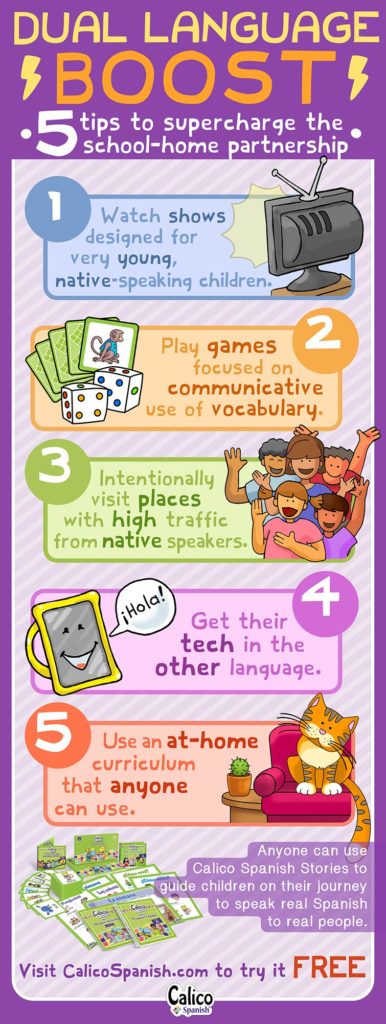
5 ways to support dual immersion language learning at home
I’ve been teaching learners ages 2 to adult Spanish in various contexts, and I’m raising three bilingual children who have all been in a dual language immersion school. From my experience, here are five ways specifically parents and other caregivers can support these young language learners at home. Critically, these work even if you don’t speak Spanish (or whatever language their DLI program is targeting).
1. Watch quality shows designed for native-speaking but very young children.
Shows that are designed for very young, native-speaking children have a whole lot of quality language for learners, too. The obvious reason is that the shows are targeted at children who are acquiring language. Thus, there is often a narrator who asks a lot of simple, yes/no questions, and the language will be highly repetitive. (Sounds like Calico Spanish Stories!) Let’s look at a couple of examples.
First, try Pocoyó en español. Their YouTube channel boasts a ton of videos and over 7 million subscribers. Most of their videos are long-play, but each contains many episodes that are just several minutes long, so it’s easy to include in your routine even if you (understandably) want to limit screen time. The language in Pocoyó is so effective because it is just so simple: Pocoyó barely speaks, and the narrator moves the story along by asking and answering very simple questions of the characters.
– Follow us on Instagram too! –
Also, check out Peppa Pig. The crazy antics of the Pig family can get really annoying to adults, but kids seem to love everything Peppa does. Just take as evidence the 10 million+ subscribers to their channel full of episodes in Latin American Spanish. (They don’t seem to have a channel dedicated to Castilian Spanish.) Again, the episodes are very short and offer repetitive language with a lot of question/answer segments.
If your learners are getting beyond the language they’ll hear from Pocoyó and Peppa, definitely check out Paka Paka. This learning site from the government of Argentina is packed with fun videos. My children are big fans of Mundo Zamba!
One more tip – if your kids, like mine, sometimes complain that they can’t understand what’s being said, try changing the speed. Click the settings wheel on the bottom right part of the video, then change the playback speed to .75. Don’t leave it there, though- have them watch it again at normal speed!
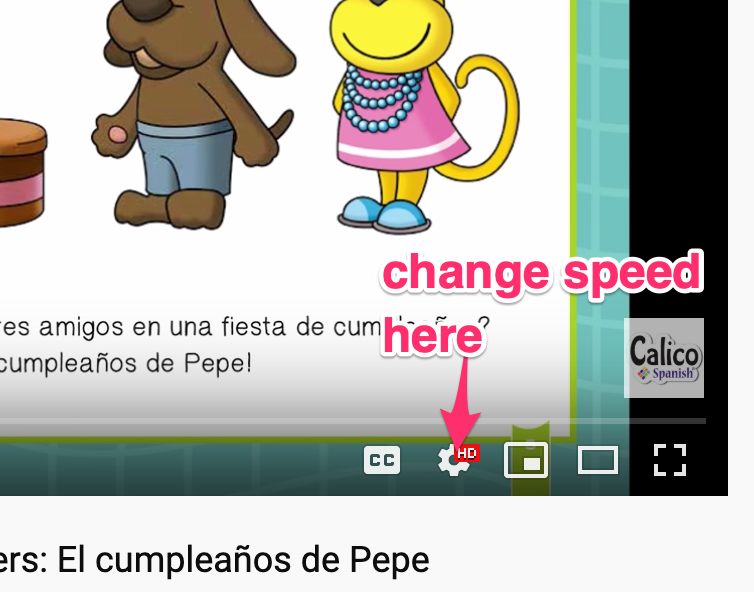
2. Play games that are focused on communicative use of vocabulary & structures but don’t flood you with ads.
If you have ever searched “online games in Spanish,” I feel your pain. There is no end to the suspicious, ad-filled sites that come up. You’re lucky if you click on any of them without being flooded with pop-ups and flashing ads for who knows what, not to mention login requirements. Then, it’s always questionable if the game will even work, or be helpful at all.
Like videos, the safest route is usually in commercial sites designed for young, native-speaking children, hosted by brands trusted for their child-friendly content and getting most of their revenue from elsewhere. For example, Plaza Sésamo has no real commercial purpose in their website except to keep young children as fans of the Spanish version of Sesame Street, so you can be pretty sure it’s a good spot for kids to play. The problem here, though, is that the games are not necessarily about learning language. Often, there’s not much Spanish knowledge required at all to actually achieve the desired result of the game.
That’s the case with the games page at Paka Paka, too – at first, it looks like a fun place for kids to play. Upon further exploration, though, you’ll see how little language is included in the games. A learning site like Educapeques is another good option that again, may fail to deliver and language-specific results. Also, such low-budget sites have poor maintenance, as evidenced by how many links are broken.
On the other hand, we’re slowly seeing more options directed at English-speaking young learners of Spanish, such as those from PBS Kids. An example is Oh Noah, a show featuring a boy staying with his grandmother in a Spanish-speaking place. There are videos and games at the site, but with this program in particular, the language is directed at kids who are barely learning a few words in Spanish, not the dual-immersion crowd. And even though the educational television powerhouse does have some video options in Spanish, including Daniel Tiger, they’re hard to find by navigating on the website. Worse, when you get excited about the page PBS Kids dedicates to Spanish-language games, all the links are broken.
In an attempt to help solve the problem of how few game resources exist for dual immersion and other Spanish learners, we created an interactive games page. Our games page does not require a login and has zero external ads. All of the games were created to support communicative language acquisition in Stories, our online learning platform that anyone can use to teach Spanish to young children. However, the games can be by used by anyone, anytime. Young learners will put common dialogues in order, work with vocabulary in various ways, and even select all the items in an image that are, for example, blue. We’ll be adding more and more games in the coming months, so keep checking back for more! In the meantime, we recommend that you share the games page in these ways:
- Make sure all the teachers in your dual immersion school know where to find it.
- Link the page in the resources page for your school.
- Send home the link in newsletters you use to communicate with parents.
3. Intentionally visit places with high traffic from Spanish speakers.
My family and I enjoy living in a city with a lot of diversity. When we visit a park, we may hear people speaking languages like Spanish, Bosnian, Nepali, Ukrainian, or Swahili. Our city has long been a thriving refugee resettlement city. It boasts a dramatically surging Cuban population in spite of its distance from the East Coast. So for us, wandering the city at any time is a way to be around people who speak Spanish, but even if you don’t live in such a diverse place, chances are there are still ways for you to expose young learners to more Spanish speakers.
Think of your area and how enclaves naturally develop: is there a place where there are more restaurants and stores that market to Spanish speakers? What about churches? Chances are where you find the stores and churches, you find the neighborhoods. Is there a park nearby? If you switch your normal park outings to one in that neighborhood, your learners may have a better chance of making Spanish-speaking friends. I’ve learned from experience that I’m much more likely to hear my children voluntarily speak Spanish when they’re around children who prefer Spanish.
Where can families in your area take young children to intentionally put them around more people who speak Spanish? Their dual immersion experience will benefit from it!
Introduce a child you love to a lifelong journey of speaking real Spanish to real people. Click the red button to experience it FREE.
4. Take advantage of tech in Spanish.
When it came to Spanish-language entertainment, for long Netflix was the winner across the board. When it came to Spanish-language educational apps for kids, the resources have always been underwhelming. In the ten years I’ve been raising bilingual children, I’ve struggled to find apps that were more than one story that engaged kids for a few days, or more than a simple vocabulary translation game- and sometimes badly translated at that.
And then Amazon got the bilingual memo.
We were a mostly Apple-product family until I saw the news in 2018 that Amazon would offer a wide range of Spanish options in their new Kindle Fire Kids edition. The price is so much below an iPad, the device is nearly indestructible (and has a crazy good warranty just in case), and now, the Spanish-language options are incredible. My kids got two of them last Christmas to share among the three of them and we’ve been happy with the options. A couple of caveats: if you don’t understand Spanish, you’ll have a hard time navigating the settings. Also, the headings are automatically all in Spanish, but the content isn’t – you’ll have to deliberately find and download the Spanish options. Still, the options that are there are much better than what we used to have.
Whatever tech you’re allowing to be part of children’s entertainment and education, see what Spanish language options it has. Edutainment targeted at native Spanish-speaking children helps dual immersion learners, too!
5. Use an at-home Spanish curriculum that can be used without prior knowledge.
Though the above suggestions are helpful, none of them is quite effective in involving the biggest stakeholder in the dual immersion learner’s life: the parent or other caregiver. For dual immersion learners with parents or caregivers who do not speak Spanish, the resource landscape is bleak. Either the resource isn’t quite challenging enough to help the child, or the adult is stuck in the background trying to help but usually unable, trying to understand what’s going on, but mostly confused. Where is a resource that brings the dual immersion learner and a non-Spanish-speaking caregiver together in the learning journey?
Several years ago, teachers and parents began to approach us with a question of whether a person who was not a proficient Spanish speaker could successfully implement our school curriculum. The answer was no, but the question made us think, brainstorm, plan, and eventually develop the Stories program. The Spanish input in Stories comes from our fun Video Stories instead of relying on a teacher or other guide to speak Spanish.
In the Video Stories, repetition and strong visual cues like flash cards and arrows help the viewer understand what’s going on. Beyond the Video Stories, the program suggests games and activities with printable posters, flash cards, Activity Sheets, and more. Of course, a proficient Spanish speaker will be comfortable directing the program in Spanish, but everything from the directions to the examples are written to ensure that anyone can follow them.
In the four levels of Stories, Level A begins with very simple language, such as answering the questions “What’s your name?” or “How are you?” These are not questions a dual immersion learner will need much exposure to. These young Spanish learners are typically much more ready for Level B (“I Love My Family!”) or even Level C (“I Live Here!”).
Because we want to support all learners at home and school, we’ve made the entire Stories program, all 200 hours of planned lesson content available to families using the program at home at 67% off our school price. We’re not aware of another program that so completely supports non-Spanish-speaking families in their journey to raise bilingual children. Click below to find out more, and every time you see the red button on our site, it’s your opportunity to try 8 units absolutely free for an entire week.
Dual immersion learners are a very special group of kids on a very special journey. Surround them with games, music, entertainment, friends, and versatile resources in Spanish, and watch their language skills grow!



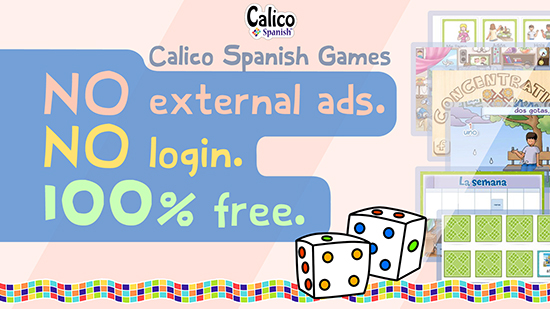
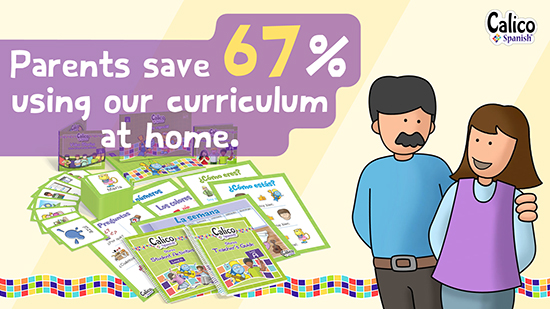


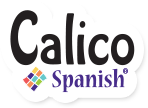
One comment
I liked your suggestion to visit some areas with some more Spanish speakers. My daughter wants to make sure her son is as exposed to the language as he is English. I’ll be sure to mention this to her soon.